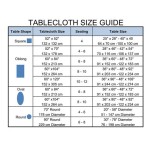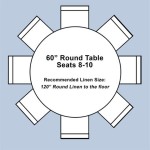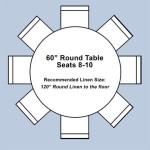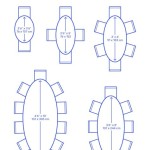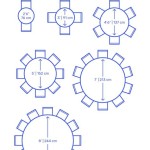What is the Use of Tablet Emeset 4mg?
Emeset 4mg is a medication primarily used to prevent and treat nausea and vomiting. Its active ingredient is ondansetron, a selective 5-HT3 receptor antagonist. This classification refers to its mechanism of action, which involves blocking serotonin, a naturally occurring substance in the body that can trigger the vomiting reflex. Understanding the use of Emeset 4mg requires a closer examination of its applications in various medical scenarios, its mechanism of action, and the considerations surrounding its administration.
The efficacy of Emeset 4mg stems from its ability to target specific receptors involved in the emetic pathway. Serotonin, released from enterochromaffin cells in the small intestine in response to various stimuli such as chemotherapy drugs or radiation, activates 5-HT3 receptors. These receptors are located on vagal afferent neurons, which transmit signals to the vomiting center in the brainstem. By blocking these receptors, ondansetron effectively interrupts the signals that initiate nausea and vomiting.
Emeset 4mg is available in various formulations, including tablets, orally disintegrating tablets, and intravenous solutions. The choice of formulation depends on the individual's needs and the clinical context. Orally disintegrating tablets are especially useful for individuals who have difficulty swallowing or when rapid absorption is desired. Intravenous administration is typically reserved for situations where oral administration is not feasible, such as during surgery or in patients experiencing severe nausea and vomiting.
Prevention of Chemotherapy-Induced Nausea and Vomiting (CINV)
Chemotherapy-induced nausea and vomiting (CINV) is a common and debilitating side effect of cancer treatment. Many chemotherapy drugs trigger the release of serotonin in the gastrointestinal tract, leading to activation of 5-HT3 receptors and subsequent nausea and vomiting. Emeset 4mg is widely used as a prophylactic agent to prevent CINV in patients undergoing chemotherapy. Its effectiveness has made it a cornerstone of antiemetic therapy in oncology.
The use of Emeset 4mg in CINV prevention is typically part of a comprehensive antiemetic regimen. This regimen may also include other antiemetic medications, such as corticosteroids (e.g., dexamethasone) and NK1 receptor antagonists (e.g., aprepitant), which act through different mechanisms to control nausea and vomiting. Combination therapy is often more effective than using a single antiemetic agent, particularly in patients receiving highly emetogenic chemotherapy regimens.
The timing of Emeset 4mg administration is crucial for optimal efficacy. It is typically administered before the start of chemotherapy and may be continued for several days after treatment to prevent delayed CINV. The dosage and duration of treatment depend on the specific chemotherapy regimen and the individual patient's risk factors for CINV.
Clinical guidelines for CINV management, such as those published by the American Society of Clinical Oncology (ASCO) and the National Comprehensive Cancer Network (NCCN), recommend the use of 5-HT3 receptor antagonists like ondansetron as part of a standard antiemetic regimen for patients receiving moderately or highly emetogenic chemotherapy. These guidelines provide evidence-based recommendations to help clinicians make informed decisions about the prevention and treatment of CINV.
While Emeset 4mg is effective in preventing CINV, it is not always completely successful, particularly in patients receiving highly emetogenic chemotherapy. In such cases, additional antiemetic agents may be necessary to achieve adequate control of nausea and vomiting. Furthermore, individual patients may respond differently to antiemetic medications, and it may be necessary to adjust the regimen based on the patient's response and tolerability.
Management of Postoperative Nausea and Vomiting (PONV)
Postoperative nausea and vomiting (PONV) is a common complication following surgery, affecting a significant proportion of patients. PONV can lead to patient discomfort, delayed discharge, and increased healthcare costs. Several factors contribute to the development of PONV, including the type of anesthesia used, the duration of surgery, and individual patient factors such as a history of motion sickness or previous PONV.
Emeset 4mg is frequently used to prevent and treat PONV. Its mechanism of action, blocking 5-HT3 receptors, is effective in reducing the incidence and severity of nausea and vomiting following surgery. It can be administered preoperatively as a prophylactic measure or postoperatively to treat established PONV.
Risk factors for PONV can be assessed preoperatively using validated scoring systems, such as the Apfel score. Patients at high risk for PONV may benefit from prophylactic antiemetic therapy with Emeset 4mg or other antiemetic agents. Combination therapy, using multiple antiemetics with different mechanisms of action, may be more effective than using a single agent, particularly in high-risk patients.
The choice of antiemetic for PONV management depends on several factors, including the patient's risk factors, the type of surgery performed, and the available resources. Emeset 4mg is often preferred due to its efficacy, safety profile, and relatively low cost. However, other antiemetic agents, such as droperidol or dexamethasone, may be used in combination with or as an alternative to ondansetron.
The timing of Emeset 4mg administration is also important in the management of PONV. Preoperative administration is generally more effective in preventing PONV than postoperative administration. However, if PONV develops postoperatively, Emeset 4mg can be administered intravenously to provide rapid relief.
Non-pharmacological measures, such as adequate hydration and avoidance of rapid changes in position, can also help to reduce the incidence and severity of PONV. These measures should be used in conjunction with pharmacological interventions to provide comprehensive management of PONV.
Treatment of Radiation-Induced Nausea and Vomiting (RINV)
Radiation-induced nausea and vomiting (RINV) is a common side effect of radiation therapy, particularly when the radiation field includes the abdomen or pelvis. Similar to chemotherapy, radiation therapy can cause the release of serotonin in the gastrointestinal tract, leading to activation of 5-HT3 receptors and subsequent nausea and vomiting. The severity of RINV depends on several factors, including the dose of radiation, the location of the radiation field, and individual patient factors.
Emeset 4mg is effective in preventing and treating RINV. It is typically administered before each radiation therapy session and may be continued for several days after treatment to prevent delayed RINV. The dosage and duration of treatment depend on the specific radiation therapy regimen and the individual patient's risk factors for RINV.
The use of Emeset 4mg in RINV management is often part of a comprehensive antiemetic regimen, which may also include other antiemetic medications, such as corticosteroids. Combination therapy may be more effective than using a single antiemetic agent, particularly in patients receiving high doses of radiation or radiation to the abdomen or pelvis.
Clinical guidelines for RINV management recommend the use of 5-HT3 receptor antagonists like ondansetron as part of a standard antiemetic regimen for patients receiving radiation therapy to the abdomen or pelvis. These guidelines provide evidence-based recommendations to help clinicians make informed decisions about the prevention and treatment of RINV.
While Emeset 4mg is effective in preventing RINV, it is not always completely successful, particularly in patients receiving high doses of radiation or radiation to the abdomen or pelvis. In such cases, additional antiemetic agents may be necessary to achieve adequate control of nausea and vomiting. Furthermore, individual patients may respond differently to antiemetic medications, and it may be necessary to adjust the regimen based on the patient's response and tolerability.
In addition to pharmacological interventions, non-pharmacological measures, such as dietary modifications and adequate hydration, can help to reduce the incidence and severity of RINV. Patients should be encouraged to eat small, frequent meals and avoid foods that are likely to trigger nausea and vomiting. They should also be encouraged to drink plenty of fluids to prevent dehydration.
Patient education is also an important component of RINV management. Patients should be informed about the potential side effects of radiation therapy, including nausea and vomiting, and they should be instructed on how to manage these side effects. They should also be encouraged to report any symptoms of nausea and vomiting to their healthcare provider so that appropriate treatment can be initiated.
Ultimately, Emeset 4mg plays a crucial role in managing nausea and vomiting across these different medical contexts. Its targeted mechanism of action, coupled with its relatively favorable safety profile, makes it a valuable tool for healthcare professionals seeking to improve patient comfort and quality of life during chemotherapy, surgery, and radiation therapy. However, it's vital to remember that the appropriate use of Emeset 4mg, including dosage and administration schedule, should always be determined by a qualified healthcare professional, taking into account individual patient factors and clinical circumstances. Furthermore, it is important to be aware of the potential side effects and drug interactions associated with Emeset 4mg and to monitor patients accordingly.
Emeset 4 Mg Tablet Uses Dosage Side Effects Composition Practo

Emeset 4mg View Benefits Side Effects Netmeds

Emeset 4mg Tab Buy At Best In Nepmeds
Emeset 4 Tablet Uses Dosage Side Effects Substitute Buy

Cipla Ondansetron 4mg Emeset 4 Mg Tablet At Rs 1500 Box In Nagpur Id 2850360775455

Emeset 4mg Tab Buy At Best In Nepmeds

Emeset 4 Mg Tablet 10 Uses Side Effects Dosage Pharmeasy
Emeset 4 Mg Tablet Md Uses Dosage Side Effects Composition Practo

Emeset 4mg Tablet Ondansetron Genericbucket

Emeset Odt 4mg Tablet 10 S Buy Medicines At Best From Netmeds Com
Related Posts

